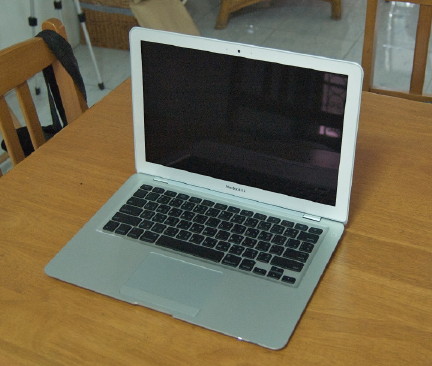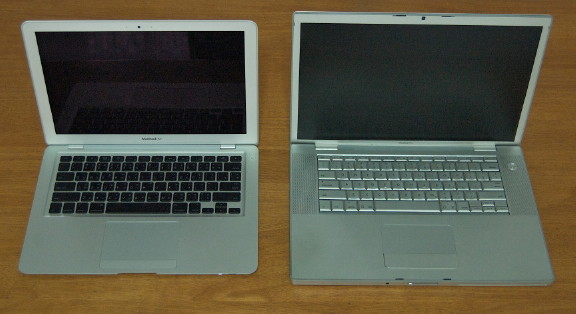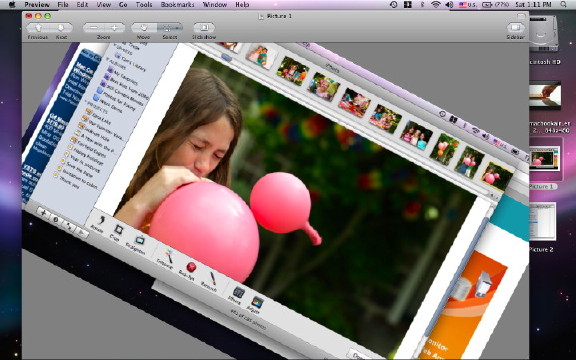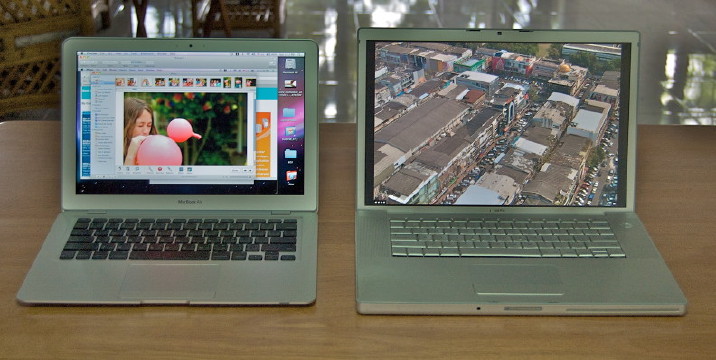|
|

The one thing that surprised many people when the MacBookAir was announced was the lack of an optical disk drive. It may be a natural progression with the faster WiFi links now. This also indicates the intention of the MacBookAir as a second, or even third computer aimed at those who travel often and attend meetings or make presentations. A friend also pointed out that this would be exactly right for a lady.

Software is either downloaded (as most of mine is these days) or installed from another Mac. Or from a PC running Windows. An external drive is also available as an option. The software to do this, and even to re-install the operating system if ever needed, is on the disk that comes with the MacBookAir. Similar software for the Mac was also on the disk, but with the update of Leopard to 10.5.2 a new Sharing preference for disks is now available. Once this part of the panel is checked, a dialogue reports that "This allows users of other computers to use this computer's DVD or CD drive remotely" but this appears only to operate with the MacBookAir. With my other machines, the disk was not playable: on the MacBookAir there is an icon with the legend, "Remote Disk.

As well as downloading and installing NeoOffice (my preferred Office suite) I was able to access the Microsoft Office install disk from the drive in my MacBookPro, or from the eMac that is also on my home network. I was also able to run Video DVDs from either of the two computers: there was no jerkiness or noticeable delay with data transfer: the network and computers use the 802.11n standard. For security, there is a "request and accept" protocol between the two computers. The disk then appears on the MacBookAir desktop and can be viewed using DVD Player. Along with the lack of a disk drive, the MacBookAir has no Ethernet connector, so this is a wireless-only machine. At home, where there is a network I can trust, the MacBookAir joined the network without difficulty any time I used it. At my office, once proxy settings were accepted, there was also access. I took it along to Siam Center and while I had lunch there, joined the True service on one of its good days. At home, I was pleased to find that, as it was one of Apple's demonstration models, not only did it have a large collection of high-quality photographs, but that someone had downloaded a selection of TV shows normally forbidden to those of us here. The photographs, movies and television episodes look fine on the glossy screen, despite its 13.3" size.

The hard disk is not large for these days. My MacBookPro has a disk of some 120G, while the MacBookAir has 80GB and an iMac I bought last week has a 320G disk. The MacBookAir, therefore, is not really designed to be a user's prime computer: who would want to run a business from a machine such as this? In addition, an option (still somewhat on the expensive side) is for the disk to be replaced by a 64G solid state chip which improves access time. As an indication of its novelty, one blogger in the US missed his plane because of this as the security staff did not believe it was a computer. With the standard disk, I was able to carry around quite enough information while it was in my hands to be able to operate successfully with spreadsheet data like student marks, a mirror copy of my website, documents and presentations.
During the seven days it was in my hands, several computer engineering students tried the computer, including a couple who already have Macs. All expressed satisfaction with the machine, despite its size and processor speed. This computer was equipped with 1.6GHz processor. It is available in Bangkok and I have seen it priced at 68,500 baht. The 1.8GHz version is 76,900, while the 1.8GHz version with the solid state memory is 112,990 baht. If I did not already have a MacBookPro, this would be a good portable device for me, particularly as I tend to move about with both camera and computer, putting a strain on my back. At 1.36Kg as opposed to 2.45Kg for the MacBookPro there is a difference that I could feel, as well as the design differences that could be easily seen and appreciated.

See also Part One: the first part of the examination.
|
|
 The MacBookAir comes with a micro-DVI to VGA adapter and an adapter for (normal) DVI. I had it connected to a projector within seconds and it behaved like the other Macs I have. I start the projector and computer, attach the adapter to the projector and then insert the adapter into the video port. The Mac adjusts automatically to the projector's screen size and the presentation begins.
The MacBookAir comes with a micro-DVI to VGA adapter and an adapter for (normal) DVI. I had it connected to a projector within seconds and it behaved like the other Macs I have. I start the projector and computer, attach the adapter to the projector and then insert the adapter into the video port. The Mac adjusts automatically to the projector's screen size and the presentation begins.